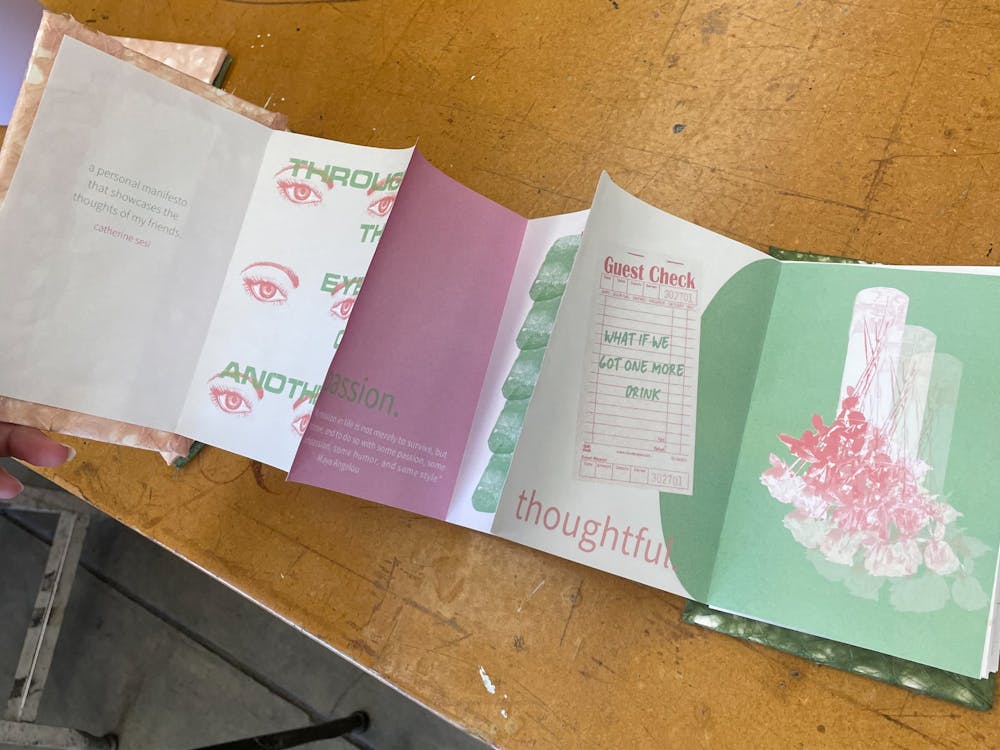Ever heard of zines? Maybe if you’ve seen a '90s documentary or two lately. Or if you are involved in an LGBTQ+ club on campus. If you haven’t heard of them yet, you will. The art form has fallen out of circulation in recent years, but it’s making a huge comeback, especially at ASU.
The Herberger Institute for Design and the Arts is celebrating this resurgence with a Queer Zine Party on Oct. 12.
Zines – short for magazines – are self-made, self-published collections of art and literature that resemble pamphlets or short books. In a digitally overloaded world, these small, physical creations hold a unique appeal. Artists can bask in the permanency and tangibility of their art, as opposed to only posting their creations online.
However, the appeal of zines is not limited to aesthetics. Zines have been used to express ideas and beliefs outside of mainstream communication channels for decades. Before the days of the internet, zines were a way to share information within early fandom spaces and the queer people in them. Because of this, they have been essential to the expression of LGBTQ+ culture.
"So much queer history and experiences were documented in zines because they were underground, so it felt safe to share," said Nailahni Thompson, a senior majoring in art.
The link between modern zines and the LGBTQ+ community was furthered by the AIDS crisis of the 1980s. Misinformation on the disease was rife, so zines were distributed and exchanged to spread accurate information.
The involvement of zines in queer life continued to the 1990s during the Riot Grrrl movement. Women in the Pacific Northwest were tired of being told that they did not belong in the male-dominated punk scene. So, they protested in the form of art. These women were joined by voices from other oppressed groups, primarily the LGBTQ+ community.
Many of these historical zines can be viewed online in the Queer Zine Archive.
"One of the traditional uses of zines in queer communities ... is to share knowledge without having to rely on publishers or corporate platforms," said Hilary Harp, an associate professor at ASU’s School of Art who is involved in running the event.
Zines have the unique power of cutting through the red tape of publishing and censorship as they are not subject to mainstream voices or ideals. Anyone is allowed to make a zine and to say exactly what they want.
"Zines have a way of documenting our presence," said Ruby M., a senior in museum studies, who requested partial anonymity to protect their privacy. "It’s like a stamp saying we were here, this is what we were talking about."
In celebration of Out @ ASU week, and the greater queer community, The Herberger Institute for Design and the Arts is partnering with The Rainbow Coalition, The Multicultural Communities of Excellence, and Cultural Connections to host a Queer Zine Party on the evening of Oct. 12. At 6:30 p.m. in the Student Pavilion, room 302, students will be welcomed into a group zine fest. Students will work together to create a zine, while enjoying free food and the company of fellow students and artists.
"If you attend, you, might learn a little bit about the way zines have contributed to queer history, and also be able to make your own," Ruby said. "It is a form of self-expression."
Attendees will also get the opportunity to work with Charissa Lucile of Wasted Ink Zine Distro and organizer of the annual Phoenix Zinefest.
"We can be creative in a non-judgmental space," Thompson said. "There are no rules."
Edited by Claire van Doren, Wyatt Myskow, Sophia Balasubramanian and Kristen Apolline Castillo.
Reach the reporter at myarmst2@asu.edu.
Like The State Press on Facebook and follow @statepress on Twitter.




